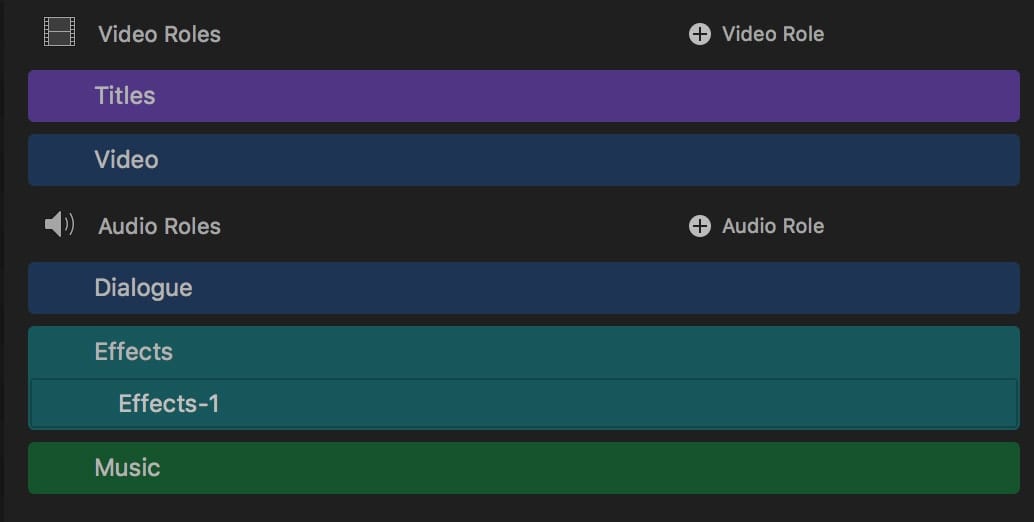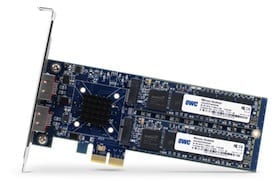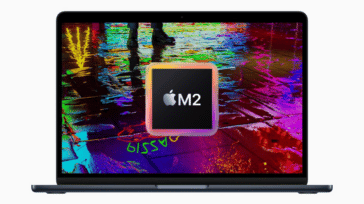Patricio Ortega, the renowned Chilean carpenter and furniture designer of Maderîstica, said of his craft of carpentry, it “is not a job like another, it is a way of being from doing. We are what we do.” As with the case with the master craftsperson, the hands of a professional creative wield the tools of their trade. They deliver the feedback and control demanded for precise execution.
Online, the chorus of voices chimes in with the refrain that NLEs and computers “are just tools.” But every carpenter knows that when handled with skill, the right tool delivers an unmatched sense of flow that transcends the mundane and gives genuine pleasure to the task of crafting a piece of art. For many creative pros, Apple engineers our tools of choice. From the hardware to software, Apple casts a vision for creatives of an elegant, integrated, and unique experience. For many, it lowers the barriers of entry to the creative professions. And to some, Apple threatens the status quo and their livelihoods. We’ll listen to what some creative professionals in the video industry hope to see from the tech giant of Cupertino on where they should take the Mac.
Where should Apple take hardware?
Few creatives have tracked Apple’s moves like Mark Spencer of Ripple Training. Over the years, together with Steve Martin, he’s trained a whole generation of video pros. In 2020, Apple debuted their first in-house made desktop and notebook processor, the M1. It sports an entire “system on a chip design.” Mark weighed in with his thoughts. “I’m already very excited about Apple Silicon and can’t wait to see the upcoming MacBook Pro, iMac and other “M1x” releases.”
Apple’s new hardware put the system-building world on notice, with Intel challenging Apple’s performance claims. While Apple’s first outing impressed reviewers, most creative pros exercised cautious optimism while waiting for higher spec’d machines to debut. As Mark noted, those machines should start getting their own versions of Apple Silicon soon, and we want to know if they will truly deliver over their Intel counterparts in the heavy-duty tasks of daily work.
- Can Apple create CPU solutions that will accelerate After Effects performance in single-threaded tasks over Windows machines?
- Can they offer GPU performance to rival NVIDIA’s CUDA platform for Cinema4D?
- Will RED camera’s R3D decoding rival custom-built PCs?
Legendary colorist and author Alexis Van Hurkman summarizes it well. “The new Apple Silicon hardware architecture seems to have real promise, so I’m hoping to see Apple make a real commitment to advanced GPU processing, to power the many applications that have come to rely on the speed that GPUs offer.” These are the kind of targets that pros want to see specifically aimed at by Apple and its software partners.
A mid-sized Mac Pro
Noted Apple observer and host of FCPRadio.com, Richard Taylor, desires a “Macintosh Desktop between a MacMini and MacPro.” His request echoes creative pros from across the industry. Many hope that Apple’s new Silicon will yield such a machine. For many years editors have noted that things like server-class Intel Xeon chips and ECC memory in the Mac Pro don’t provide the benefit to warrant their cost, but the iMac would fall short of the performance needed.
But Richard warns that Apple must not “downgrade the Mac Pro. Keep eight PCI slots, user-upgradeable memory, graphics, and GPU.” This modularity is key for many pros, and overkill for some. Van Hurkman also believes, “It would also be nice to see a price point somewhere between a top of the line iMac and a fully configured Mac Pro tower, for a pro-oriented multi-GPU machine capable of powering software like DaVinci Resolve at real-time doing 4K/8K processing without breaking the bank.” Professional colorists put some of the highest demands on GPUs in the creative field. Patrick Southern from Frame.io writes, “The more hardware acceleration available for playback and transcoding of various codecs, the better. Some of this is simply a matter of firmware updates to existing hardware. Some of it is a replacement of existing hardware.” And the influx of 8K cameras will put Apple’s silicon to the test.
Pro XDR Display
Apple boldly strode into the HDR display field with the Pro Display XDR. It features impressive peak brightness and a “sweet spot” of 6K resolution. But many found that it occupied a unique “middle ground” without some of the necessary features of high-end displays. “I also look forward to the evolution of the Pro Display XDR,” Van Hurkman notes “either pushing the peak performance up or finding ways to push the price down.”
This display is an impressive accomplishment compared to a typical computer monitor, but when the local dimming is compared to other displays it comes up a bit short for the highest end workflows. Patrick Southern makes the point, “Apple could also do well by improving the backlighting for the next ProDisplay XDR. The limited backlight LEDs lead to ghosting now. This can make blacks look milky in high-contrast scenes.” This combo means that it’s great for creating direct to web HDR content. Think of the iPhone’s ability to shoot Dolby Vision. But it falls short of video reference standards. That makes it hard to identify the target customer, beyond the highest end of YouTubers. Apple pioneered some great tech here, and Pros now want to see it simultaneously evolved and democratized.
Hardware summary
GPU Performance, expandability, and value come through as the key points for these video professionals. Those themes tug at the extremes of the hardware story and hope that Apple can deliver products that make sense for businesses and the demands of artists. Let’s hope that Apple holds itself to that standard as well.
Where should Apple take software?
Final Cut Pro

“Things don’t have to be how we assume they are,” the Chilean carpenter quipped while drawing inspiration for carpentry from an early design of skyscrapers as houses in the clouds, “but we can rethink them.” Perhaps this same thought process formed the ideas that eventually grew into Apple’s Final Cut Pro X. In a radical departure from the conventions that it helped to establish, the new version of Final Cut Pro introduced a new way of working in the NLE. It still stands as a radical “rethinking” of video editing, where video is understood as data, rather than film. Apple broke new ground in the timeline, and especially in the use of metadata and organization. Final Cut Pro turbocharged the speed at which edits could be completed. And it unsettled many in the status quo.“
I’m focused on Final Cut Pro and related applications” Mark Spencer noted, “I’d like to see improved collaboration features.” While applications like Blackmagic Design’s DaVinci Resolve implemented collaboration features, Apple still appears to be holding out from going all-in on simultaneous access to the same library or project by multiple editors. However, behind-the-scenes progress has been made.
In March of 2020, I was able to collaborate with the early versions of Hedge’s Postlab software. Postlab, combined with their Postlab Drive service, represents the bleeding edge of collaboration. Patrick Southern, Workflow Architect at cloud video collaboration platform Frame.io, is quoted on their site as saying that “there isn’t a better way for editors to work together remotely on the same FCPX libraries.” Personally, I’d love to see Apple build real-time collaboration on the work that Hedge has done with Postlab. Apple’s patents have hinted at it as far back as 2012—what better time could there be then when we are all working from home, to make this feature a reality?
Southern also makes the point that “Final Cut Pro should run in the cloud. Users could ingest their footage to the cloud, and let the rack-mounted Mac Pros in a massive data center handle the playback and export of their media … media creation is becoming more collaborative, not less collaborative. This is something that needs to be fixed within the app, not by a third-party.” Apple has the opportunity to “rethink” video editing collaboration, the same way they did for the process of cutting itself.
AV Foundation

Years ago, iOS laid the foundation for Apple’s new audio and visual foundation, AV Foundation. Alexis Van Hurkman would like to see it “do more to expand and encourage color-managed workflows among developers across a variety of industry-standard camera and media formats, as well as to expand the array of embedded metadata that can be handed off among diverse media applications in standardized ways.”
While Apple focuses on the synergy between iOS and macOS, pros would like to see workflows that blend the strengths of Apple’s vertical integration with an awareness of the many formats that come through the post-production pipeline. For instance, workflows such as ACES could be more deeply integrated into Apple’s color correction efforts. We’ve seen what Apple can do with metadata and standards like Dolby Vision on the iPhone 12 for acquisition. Post-production pros would love to see some of those smarts applied on their side of the equation, resulting in workflows that ease cross-format, cross-platform collaboration.
Software Performance
Stability, new innovative features, and speed top the list of wishes for Richard Taylor. When you observe the updates to Apple’s pro video apps, it often feels like a pendulum swinging between new features and bug fixes. However, there seems to be work to do at the ground level for speed.
Veteran video professional and educator Larry Jordan noted that Apple introduced the Afterburner card for accelerating ProRes RAW files, which is great. But “streaming ProRes 422 files remain principally CPU based.” It appears that Apple has work to do to optimize software performance with the legendary ProRes codec. Additionally, it would be wonderful to see the Afterburner compatible with third-party raw codecs such as REDCODE RAW.
Audio Editing
While Final Cut Pro brought innovative features to the timeline for video editing, it also delivered audio innovations. Roles is at the top of the list. However, many observers have longed for a “role-based mixer” in Final Cut Pro. It seems like the feature that is missing and still has editors remembering Soundtrack Pro with fondness. We know that Apple possesses the talent to execute on audio editing, but editors continue to wait for them to unleash the power of the metadata platform that they constructed.
HDR in software
Mastering in HDR is still a challenge for most video professionals. “As HDR-capable displays eventually come down in price,” Van Hurkman observes, “it’ll also be more important for Apple to make HDR displays easy to implement from the OS to individual apps, both for UI and for media display.” Apple is keen to make progress in the HDR space. If they can apply their penchant for simplifying things for the user to the HDR experience across apps, all video pros will benefit. One hopes that their experience in the creation of original shows for Apple TV+ will surface these workflow opportunities and result in some genuinely innovative solutions.
Advanced features
Mark Spencer hits key pain points for Final Cut Pro users when he suggests that Apple could work on “tracking for both grading and visual effects, and more robust features added to Motion.” Although third parties like Core Melt provide some great third-party tracking tools, Apple could do more in this area. Tracking is such a crucial tool for colorists and VFX artists, and a powerful 3D tracker would do wonders for the workflow in FCPX and Motion. While it doesn’t fully replace After Effects for motion graphics artists, Motion is a powerful and underrated tool, especially for editors who need occasional motion graphics. When you look at the work done by MotionVFX.com you can’t deny its power.
Conclusion
One final quote from our craftsman Patricio Orega – he encourages craftspeople to “play with your tools, give them a different use than [what] they were conceived for.” Though Apple sets out to design tools for specific uses, the most creative of pros find ways to bend the rules and riff off their creations in new and unpredictable ways. We anticipate iPhone cinematography, augmented reality, virtual reality, and more will continue to shape and mold our profession in unexpected ways. But the thing that will remain constant is the need to tell stories to communicate our values to the world around us. And for those of us using Apple’s tools, let’s hope they listen and continue to deepen their collaboration with the pros in the field.













Great article! Thanks
Here are some more cool guys https://crumplepop.com/
I think the middle Mac Pro is a really good idea.
For starters the problem with the current Mac Pro vs the Cylinder.
The latter had no PCIE slots, so you were limited to TB2 for expansion, and there are only 3 TB2 host controllers each minding 2 bus ports. So you were really constrained. However it was a great form factor.
The current tower went too far in the other direction. 8 PCIE slots is absurd. Sure there are some use cases where you might have two GPUs and a fiber card for a massive fast storage array. And maybe another card taken up by a local storage volume on a card.
But can you see I’m bending over backward to imagine a use for 8 slots?
4 slots, with space around 2 of them to accommodate huge GPUs is more than enough.
We are paying for a huge warehouse when we really need something bigger than a studio apartment.
Back in the old days the fastest thing was Firewire. And only certain things were commonly blessed with Firewire. So it was much more critical to have card slots.
Fast bandwidth that can handle most critical use cases is now a reality. So we only need card slots for a couple things. GPU, and a handful of special custom workflows.
I would LOVE a smaller Mac Pro that not only shaved a few slots, but also gave more straightforward internal storage similar to the cheese grater. Even if only 6G SATA a lot of us would love to have a clean, simple, easy to access way to mount multiple volumes internally without PCIE=>NVME cards.
Personally I hate the pile of USB3 and TB2 drives that are a small village around my Mac!
I can appreciate that FCP X was a whole new approach to editing video, but there’s a reason Avid and Premiere still use the in/out by timecode FCP 7 did.
That doesn’t mean Apple can’t do something new, but the industry as a whole still loves the in/out by timecode approach that is doable but not easily from FCP X.
Audio post and mixing pro here. I just want to put my hopes and dreams of a more post-friendly Logic into writing. I’ve been trying for years to make the switch from Pro Tools, but Logic is nowhere close yet in terms of post workflow, routing, and third party (eg. RX) integration. Talking with colleagues and reading any pro audio forum, I see I am definitely not alone. Unfortunately, this means many of those same people turning to Windows as Apple continues to close down its ecosystem and are afraid of getting shut out entirely. Avid, UA and iZotope have all failed to release even a hint at M1 support. Which is sad, because Logic and Pro Tools tend to have two different end users in the pro realm.
I really like the article. I agree that Apple really need to license to its pros and give us features that they can use well. I some times get the idea that they really don’t use the systems they make. I mean no SD slot. Really!
I am not sure how to really feel about the new M1 chips. They have great potential but I kinda feel like this is the PPC Macs all over again. I mean they where great for a time. But Apple killed the Mac Pro once before and that’s when all they had to do was use an updated Intel CPU. They said it didn’t sell enough to be worth making. Then came the 2013 Mac Pro. They killed that too.
With the cost of designing and making their own chips can Apple really bring high end computing to the Mac Pro on Apple silicon. I guess they could use 2 M1 chips in a dual or quad configuration. But then we really would be back to where we were with the PPC chips.
I guess what I am saying is. I am going to wait and see where this goes. I am not really all that willing to invest in a new platform or software again.